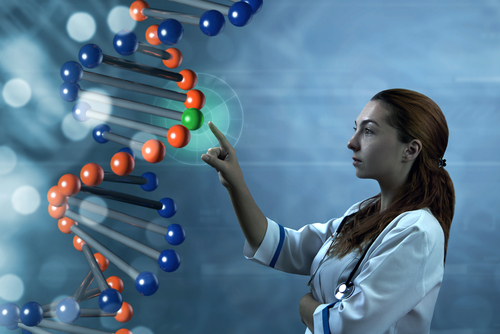Distinct and New Mitochondrial Disease Seen in Children with Certain PARS2 Mutations in Study

Researchers are suggesting that genetic variants of the PARS2 gene are responsible for an entirely new mitochondrial disease, one with distinctive clinical and molecular patterns.
Their findings were reported in “Clinical and molecular characteristics of newly reported mitochondrial disease entity caused by biallelic PARS2 mutations,” published in the Journal of Human Genetics.
In their study, researchers reviewed and analyzed the charts of six children from three independent families of different ethnicity, all carriers of PARS2 gene variations. Three were siblings in a Polish family; the others were not identified.
PARS2 encodes one of the 19 mitochondrial aminoacyl-tRNA synthetases. These enzymes are essential for correct DNA information readout and production of functional proteins.
Seventeen of these enzymes have already been linked to specific mitochondrial diseases. The contribution of the remaining two genes — WARS2 and PARS2 — to the development of diseases has not been described.
Researchers evaluated three siblings who were carriers of two copies (one from the mother and one from the father) of deleterious mutations (or alleles) in PARS2, suggestive of a recessive inheritance pattern (in which two mutations are needed for disease to occur). They also reviewed the clinical features of three reported cases of individuals with PARS2 mutations (or gene variants).
All cases were associated with impaired cognitive development from birth, and two individuals had prolonged jaundice (yellow tone to skin and eyes). Feeding difficulties, associated with impaired weight and height, were observed in all.
The main clinical feature in PARS2 variations affects the central nervous system, with the onset of seizures and spasms during early infancy. Abnormal brain development (microcephaly) was also reported for all individuals, with atrophy occurring in some regions of the brain.
“Mental development was deeply impaired, with speech absence and no eye contact,” researchers said.
Specific facial characteristics were also reported in the three siblings, including a sloping forehead, unusually wide-set eyes, prominent eyes with shallow-set eyeballs, a short nose with anteverted nostrils, an opened mouth and small chin.
Motor development was also severely impaired, with marked low muscle tone.
No renal, liver, or heart issues were detected in early stages of the disease. However, as the disease progressed, cardiac muscle alterations, as well as severe kidney and liver failure, were evident.
Researchers believe the “striking resemblance” of the clinical characteristics of all six patients with PARS2 mutations “justifies to distinguish the condition as a new disease entity.”






